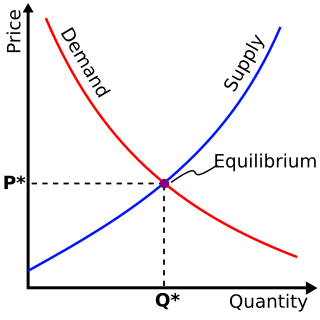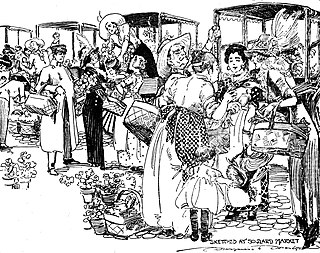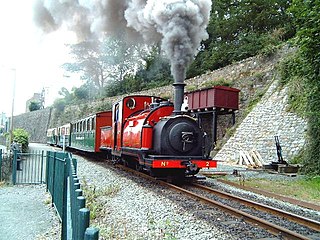In economics, a false economy or hallucinated economy is an action that does save money at the beginning but which, over a longer period of time, results in more money being spent or wasted than being saved. For example, it may be false economy if a city government decided to purchase the cheapest automobiles for use by city workers to save money; however, if cheap automobiles have a record of needing more frequent repairs, the additional repair costs would eradicate any initial savings.
Motivating factors on the part of the party engaging in a false economy may be linked to the long-term involvement of this party. For example, a real estate developer who builds a condominium may turn the finished structure over to the ensuing condominium corporation which is run by its members once the last unit is sold and the building has passed a final inspection. Longevity of the components of the structure beyond the final turnover of the facility may not be a major motivating factor for the developer, meaning that the result of the application of false economies may be more detrimental to the end user, as opposed to the developer.
Individuals may also practise false economy in their personal lives. A notable practitioner of false economy was King Frederick William I of Prussia, who was said by Thomas Macaulay to have saved five or six reichsthalers a year by feeding his family unwholesome cabbages even though the poor diet sickened his children and the resulting medical care cost him many times what he saved. [1]
Some examples of potential false economies include:
All these examples save the consumer some amount of money in the short-run, however could end up costing the consumer more further down the road.
The concept is related to planned obsolescence, whereby the lower initial cost of a product attracts buyers mostly on the basis of low cost, but who may later be at a disadvantage if the product becomes obsolete early.
Those in poverty often opt into false economies when they perceive that they can't afford the better long-term option in the short-term. [2] [3]

Microeconomics is a branch of economics that studies the behavior of individuals and firms in making decisions regarding the allocation of scarce resources and the interactions among these individuals and firms. Microeconomics focuses on the study of individual markets, sectors, or industries as opposed to the economy as a whole, which is studied in macroeconomics.
Purchasing power parity (PPP) is a measure of the price of specific goods in different countries and is used to compare the absolute purchasing power of the countries' currencies. PPP is effectively the ratio of the price of a market basket at one location divided by the price of the basket of goods at a different location. The PPP inflation and exchange rate may differ from the market exchange rate because of tariffs, and other transaction costs.
In economics, capital goods or capital are "those durable produced goods that are in turn used as productive inputs for further production" of goods and services. A typical example is the machinery used in a factory. At the macroeconomic level, "the nation's capital stock includes buildings, equipment, software, and inventories during a given year."
Overconsumption describes a situation where a consumer overuses their available goods and services to where they can't, or don't want to, replenish or reuse them. In microeconomics, this may be described as the point where the marginal cost of a consumer is greater than their marginal utility. The term overconsumption is quite controversial in use and does not necessarily have a single unifying definition. When used to refer to natural resources to the point where the environment is negatively affected, it is synonymous with the term overexploitation. However, when used in the broader economic sense, overconsumption can refer to all types of goods and services, including manmade ones, e.g. "the overconsumption of alcohol can lead to alcohol poisoning". Overconsumption is driven by several factors of the current global economy, including forces like consumerism, planned obsolescence, economic materialism, and other unsustainable business models and can be contrasted with sustainable consumption.
Obsolescence is the process of becoming antiquated, out of date, old-fashioned, no longer in general use, or no longer useful, or the condition of being in such a state. When used in a biological sense, it means imperfect or rudimentary when compared with the corresponding part of other organisms. The international standard IEC 62402:2019 Obsolescence Management defines obsolescence as the "transition from available to unavailable from the manufacturer in accordance with the original specification".

Local purchasing is a preference to buy locally produced goods and services rather than those produced farther away. It is very often abbreviated as a positive goal, "buy local" or "buy locally', that parallels the phrase "think globally, act locally", common in green politics.

Personal finance is the financial management that an individual or a family unit performs to budget, save, and spend monetary resources in a controlled manner, taking into account various financial risks and future life events.

The design life of a component or product is the period of time during which the item is expected by its designers to work within its specified parameters; in other words, the life expectancy of the item. It is not always the actual length of time between placement into service of a single item and that item's onset of wearout.

In economics, market saturation is a situation in which a product has become diffused (distributed) within a market; the actual level of saturation can depend on consumer purchasing power; as well as competition, prices, and technology.
In economics and industrial design, planned obsolescence is the concept of policies planning or designing a product with an artificially limited useful life or a purposely frail design, so that it becomes obsolete after a certain predetermined period of time upon which it decrementally functions or suddenly ceases to function, or might be perceived as unfashionable. The rationale behind this strategy is to generate long-term sales volume by reducing the time between repeat purchases. It is the deliberate shortening of the lifespan of a product to force people to purchase functional replacements.
Total cost of ownership (TCO) is a financial estimate intended to help buyers and owners determine the direct and indirect costs of a product or service. It is a management accounting concept that can be used in full cost accounting or even ecological economics where it includes social costs.

An economic system, or economic order, is a system of production, resource allocation and distribution of goods and services within a society. It includes the combination of the various institutions, agencies, entities, decision-making processes, and patterns of consumption that comprise the economic structure of a given community.

In economics, a durable good or a hard good or consumer durable is a good that does not quickly wear out or, more specifically, one that yields utility over time rather than being completely consumed in one use. Items like bricks could be considered perfectly durable goods because they should theoretically never wear out. Highly durable goods such as refrigerators or cars usually continue to be useful for several years of use, so durable goods are typically characterized by long periods between successive purchases.

The throw-away society is a generalised description of human social concept strongly erm by consumerism, whereby the society tends to use items once only, from disposable packaging, and consumer products are not designed for reuse or lifetime use. The term describes a critical view of overconsumption and excessive production of short-lived or disposable items over durable goods that can be repaired, but at its origins, it was viewed as a positive attribute.

A business can use a variety of pricing strategies when selling a product or service. To determine the most effective pricing strategy for a company, senior executives need to first identify the company's pricing position, pricing segment, pricing capability and their competitive pricing reaction strategy. Pricing strategies and tactics vary from company to company, and also differ across countries, cultures, industries and over time, with the maturing of industries and markets and changes in wider economic conditions.

In economics, demand is the quantity of a good that consumers are willing and able to purchase at various prices during a given time. In economics "demand" for a commodity is not the same thing as "desire" for it. It refers to both the desire to purchase and the ability to pay for a commodity.
A product line extension is the use of an established product brand name for a new item in the same product category.

Product lifetime or product lifespan is the time interval from when a product is sold to when it is discarded.

This glossary of economics is a list of definitions containing terms and concepts used in economics, its sub-disciplines, and related fields.

The Sam Vimes "Boots" theory of socioeconomic unfairness, often called simply the boots theory, is an economic theory that people in poverty have to buy cheap and subpar products that need to be replaced repeatedly, proving more expensive in the long run than more expensive items. The term was coined by English fantasy writer Sir Terry Pratchett in his 1993 Discworld novel Men at Arms. In the novel, Sam Vimes, the captain of the Ankh-Morpork City Watch, illustrates the concept with the example of boots.